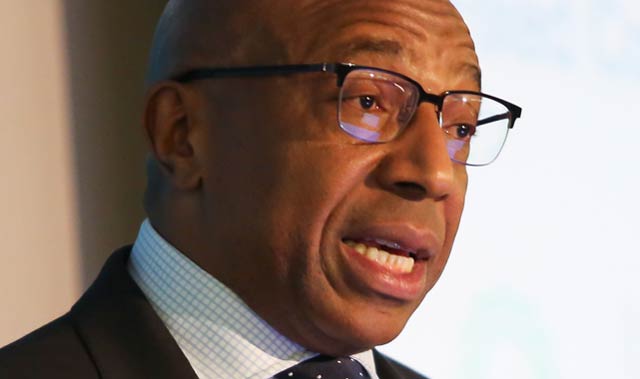 In November, I argued that Telkom’s broadband digital subscriber line (DSL) service had peaked (that was at the half-year mark). Since then, growth has slowed even further and the telecommunications giant is on a knife-edge of sorts. Don’t get me wrong, this DSL base is not going to disappear overnight. But Telkom cannot be complacent.
In November, I argued that Telkom’s broadband digital subscriber line (DSL) service had peaked (that was at the half-year mark). Since then, growth has slowed even further and the telecommunications giant is on a knife-edge of sorts. Don’t get me wrong, this DSL base is not going to disappear overnight. But Telkom cannot be complacent.
The company has been bemoaning the impact of “fixed to mobile substitution” on its legacy voice business for at least a decade, but the truth is its data business has been squeezed by this, too. And this pressure is only increasing.
Telkom itself generates nearly as much revenue from mobile data (R1,6bn) as it does from its Internet service provider (ISP) business Telkom Internet (R2bn). The broader “data connectivity” segment (line/service rental) still generates the bulk of its data revenue (at R6,8bn of the R11,8bn total, excluding Business Connexion).
As DSL growth grinds to a halt, it needs to make sure its nascent fibre subscriber base grows at a fast enough rate to offset any decline in DSL. From the subscriber numbers published on Monday, it is clear that any meaningful fixed-line data growth from this point will be from fibre alone.
At the same time, its customers have an insatiable appetite for data: fixed-line traffic volumes are up by nearly 40% (to 472 petabytes, while mobile data usage is up 72% to 37,3PB. In parts, its fixed-line network is already straining under the load. It’s only going to get worse.
In the last year, the network has gone from zero to 8 129 fibre customers, mostly in the October-March timeframe. In that same period, its added 14 092 DSL subscribers (at an ever slower number per month).
Now, 8 000-odd is not a big number, especially since Telkom says its fibre-to-the-home (FTTH) network passes 81 503 houses. That’s a penetration (or conversion) rate of 10%. In the 2015 financial year, it invested R252m on FTTH. That’s R3 091 per house passed and a cost of R31 000 per active fibre customer.
In the year ahead, its FTTH capex spend will triple to R757m. And there’s good reason for that. In September last year, it announced its goal of providing fibre access to a million homes (effectively equal to its current DSL footprint) by 2018. That is a big ask whichever way you look at it.
It could double its FTTH capex to R2bn in two years and it still won’t be sufficient
CEO Sipho Maseko said that 70 000 homes would have access by the end of 2015 (from 38 000 at the end of August), and 150 000 by March 2016. This would jump to 500 000 by December. Many (including myself) challenged these targets when they were made public, as they’re simply too ambitious. Doubling a base every few months looks great on a white board in a strategy session, but it’s tough in practice.
Basically, Telkom is looking to (roughly) double its fibre footprint nearly four times in a row inside less than 18 months. In other words, its aiming for growth of 1 200% in a year and a half. And, even if it hits that 500 000 target by the end of this year, it’s looking to double that yet again during the course of 2017!
Barely a year in, it’s already behind by nearly 70 000 houses, and this is the easy part because we’re working in the tens of thousands (not hundreds of thousands yet). But let’s assume, it gets anywhere close to 500 000 by December. That’s fibre for another 400 000 houses in nine months.

And that puts Telkom’s R757m capex number in perspective. During this year, it’s hoping to get that cost per house provisioned down to under R2 000. Go visit any neighbourhood where any provider is rolling out fibre and you’ll see just how big an ask this is. It’s a tough, labour-intensive process and it never runs on schedule.
But building out a fibre network is not the only challenge for Telkom. Convincing customers to actually start using it is another entirely. Linked to this is the migration of its current DSL customers. If penetration/conversion remains at 10%, or even 20%, it is going to have a big problem on its hands. Anything under 50% in the short to medium term would be a failure in my mind.
If it continues in this vein, it’s simply going to be forced to pay up for its smaller competitors
Competition on fibre network roll-out is intensifying. Not only are large competitors Vodacom and MTN building networks, but there are a handful of strong, nimble competitors including Vumatel, Fibrehoods, Frogfoot and Octotel who are cherry-picking the most lucrative suburbs and estates. Telkom was late to this game.
By the end of its 2017 financial year in March next year, Telkom will have spent more than R1bn on FTTH roll-out in 24 months. But it’s not nearly enough. It’s spending as much on each of its mobile network and on its (back-office) operations and business support systems in the same period! It could double its FTTH capex to R2bn in two years and it still won’t be sufficient. Telkom should be incentivising the large estate and townhouse complex developers to get these wired up.
I can’t quite fathom why it’s being this conservative with this build when the company’s fixed-line broadband future is at stake. If it continues in this vein, it’s simply going to be forced to pay up for these smaller competitors. Yes, it’s been burned on its media ambitions and in the early days of mobile, but this is the one instance where it doesn’t pay to be careful.
- Hilton Tarrant works at immedia
- This column was first published on Moneyweb and is used here with permission




